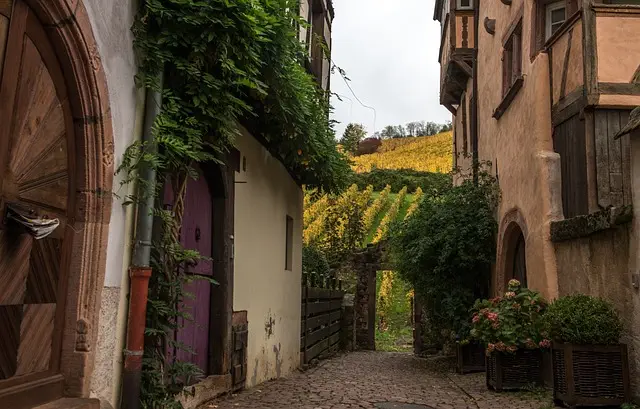Red Bali and Maeng Da are two popular kratom strains with distinct characteristics and effects. Red Bali is a well-rounded strain from Bali known for its balance of energy and relaxation, effectively relieving stress and fatigue due to its mature alkaloid content. It offers a soothing experience that promotes tranquility without impairing cognition. In contrast, Maeng Da, also known as "Pimp Leaf" and originating from Thailand, is renowned for its potency and fine-tuned balance between energy and calmness. Its unique drying and fermentation process results in a stimulating effect that can transition to a calming influence at higher doses. Maeng Da's alkaloid profile, particularly its high levels of 7-hydroxymitragynine, provide an invigorating experience that can enhance motivation and mental clarity. When choosing between these strains, consider your specific needs, as Red Bali offers a more sedative profile while Maeng Da is more energizing. Both strains should be used responsibly, with personal experimentation within safe parameters and under professional medical advice to determine the most effective option for individual wellness.
Explore the nuanced world of natural wellness with our deep dive into Vietnam’s premium kratom leaves, specifically examining the distinct properties and effects of Red Bali versus Maeng Da. This article sheds light on the subtle differences that define each strain, providing a comprehensive analysis of their potency, harvesting methods, and user experiences. Join us as we dissect the unique characteristics of these two revered kratom varieties, offering valuable insights for enthusiasts and newcomers alike in the realm of alternative herbal remedies.
- Unraveling the Distinctions: Red Bali vs Maeng Da Kratom Leaves
- The Alchemy of Effects: Understanding Red Bali and Maeng Da Kratom's Impact
- A Comparative Analysis: Potency, Harvesting, and User Experiences with Red Bali and Maeng Da Kratom Leaves
Unraveling the Distinctions: Red Bali vs Maeng Da Kratom Leaves

When delving into the realm of kratom, two varieties often capture the interest of consumers and enthusiasts alike: Red Bali and Maeng Da Kratom leaves. While both originate from the Mitragyna speciosa tree native to Southeast Asia, they present distinct characteristics that set them apart. Red Bali Kratom is recognized for its balancing properties, offering a blend of stimulating and sedative effects. It hails from the Indonesian island of Bali, and its name stems from the reddish hue of its leaves at harvest time. This coloration indicates a more mature plant, which typically contains alkaloids that can provide a soothing effect, making it a preferred choice for those seeking relief from stress or fatigue.
In contrast, Maeng Da Kratom, which translates to “Pimp Leaf” in Thai, is celebrated for its potency and efficacy. This strain is cultivated in Thailand and is known for its higher alkaloid content due to the specific drying and fermentation processes employed during its production. Maeng Da’s effects are often described as having a more pronounced stimulant effect at lower doses, which can transition into a calming influence at higher amounts. Its versatility in offering both invigorating and sedative properties at different dosages makes it a popular choice for users looking to tailor their kratom experience according to their specific needs or preferences. Both Red Bali and Maeng Da Kratom leaves offer unique benefits, and understanding these differences is crucial for anyone interested in exploring the world of kratom. Users are encouraged to experiment responsibly and consult with healthcare professionals before incorporating these natural products into their wellness routines.
The Alchemy of Effects: Understanding Red Bali and Maeng Da Kratom's Impact

Red Bali and Maeng Da kratom leaves are two distinct varieties within the kratom plant’s spectrum, each with its unique alchemy of effects. Known for their balanced blend of stimulating and sedating properties, Red Bali kratom is revered for its ability to induce a sense of calm and relaxation while maintaining cognitive clarity. This strain is primarily sourced from the Indonesian island of Bali and is favored by individuals seeking relief from anxiety and stress without significant drowsiness. Its effects are often described as a gentle wave of euphoria accompanied by a profound feeling of tranquility.
In contrast, Maeng Da kratom, which translates to “Pimp Leaf” in Thai, is celebrated for its potency and refined balance between energizing and soothing effects. This strain, originating from the forests of Thailand, is known for its heightened alkaloid content, particularly 7-hydroxymitragynine, which is believed to contribute to its efficacy. Maeng Da kratom provides a more invigorating and focused experience, suitable for those who require sustained energy and mental acuity without the overwhelming sensation that can accompany other strains. The impact of Maeng Da is characterized by a harmonious blend of enhanced motivation and a sense of well-being, making it a popular choice for users seeking both physical and mental benefits. When comparing Red Bali vs Maeng Da, one must consider their specific needs and desired outcomes, as each strain offers distinct advantages for managing various conditions. Users often document their experiences with these strains to guide others in choosing the most suitable kratom for their unique requirements.
A Comparative Analysis: Potency, Harvesting, and User Experiences with Red Bali and Maeng Da Kratom Leaves

In the realm of kratom, two varieties that often capture the attention of users for their distinct effects are Red Bali and Maeng Da leaves. A comparative analysis of these strains reveals differences in potency, harvesting methods, and user experiences that contribute to their unique profiles. Red Bali Kratom is known for its balancing properties, offering a blend of both stimulating and sedating effects, which can be particularly appealing to users seeking an equilibrium between focus and relaxation. The leaves are traditionally sourced from the Indonesian island of Bali, where the specific strain thrives in the region’s climate. Harvesting Red Bali involves careful cultivation practices that aim to preserve the alkaloid content, which is crucial for maintaining the strain’s characteristic effects. Users frequently report feelings of well-being and a calming sensation when consuming Red Bali kratom, making it a popular choice for those looking to unwind or manage stress without excessive sedation.
Conversely, Maeng Da Kratom is celebrated for its potency and robust stimulating effects. The name “Maeng Da,” which translates to “pimp grade” in Thai, reflects the rigorous selection process during harvesting, which includes picking only the most mature leaves. This results in a higher alkaloid content compared to other strains, including Red Bali. The cultivation of Maeng Da Kratom is meticulous, with attention to the plant’s growth conditions and maturity level to enhance its efficacy. Users who partake in Maeng Da often describe an uplifting energy and enhanced focus, which can be beneficial for those needing a productivity boost without the sedative overtones typically associated with other kratom strains. The distinct experiences associated with Red Bali versus Maeng Da underscore the importance of understanding each strain’s unique properties when selecting a kratom product that suits individual preferences and needs.
In conclusion, the distinctions between Red Bali and Maeng Da kratom leaves are multifaceted, encompassing their origin, potency, and user experiences. Through our comparative analysis, it’s clear that each strain offers unique effects and benefits, with Red Bali typically known for its soothing properties and Maeng Da recognized for its invigorating and potentially more potent nature. Understanding the nuanced differences between these two popular strains is crucial for consumers looking to explore kratom’s alchemy of effects. Whether seeking relief or a boost in energy, discerning users can make an informed choice between Red Bali and Maeng Da based on their specific needs and experiences.






